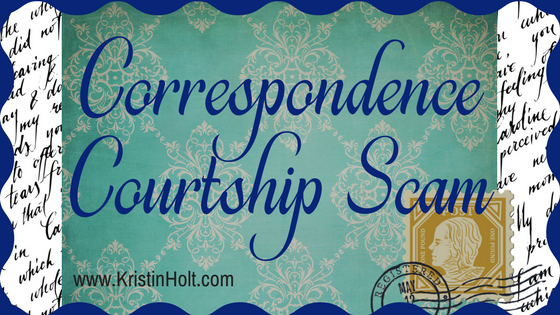
by Kristin Holt | Nov 9, 2017 | Articles
In 1905, The Courier of Harrisburg, Pennsylvania published an article detailing a “Correspondence” Courtship Scam. A young, innocent girl lost more than her heart, more than $1,000 (a fortune in today’s dollar)–she lost her confidence and her trust in humanity.
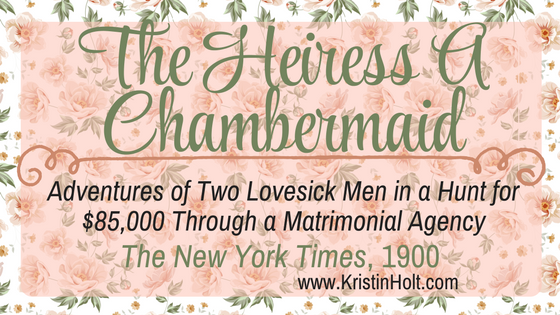
by Kristin Holt | Jun 16, 2017 | Articles
Scams involving fraudulent matrimonial companies abounded in the nineteenth century. Vintage newspapers often reported circumstances, chastised the foolish hearts who sent money to their correspondent, and insisted that no man or woman worth marrying needed to resort to the mail or an agency. This article, titled the same (as my post) was originally published in The New York Times, January 21, 1900, and details the circumstances of a purported “heiress”, gushing love letters on scented stationery, her two lovesick swains, the Manhattan matrimonial agency, and the judge’s decree.
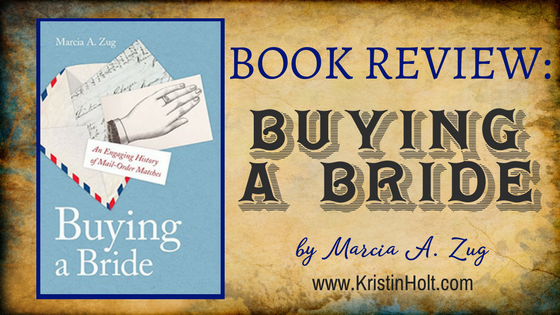
by Kristin Holt | Sep 20, 2016 | Articles
Marcia A. Zug’s 2016 publication, Buying a Bride (New York University Press) is a timely narrative of the history of mail-order brides, from colonial days in the Americas (French and English) through the growth and westward migration of the United States, and into contemporary times. The nonfiction work is an easy read, informative, amusing, enlightening, and draws heavily from original sources. Ever wondered about the TRUTH behind mail-order brides–whether in today’s news, as a setting for favorite Old West Romances, or even pre-Revolutionary War? This five-star nonfiction book is for you!
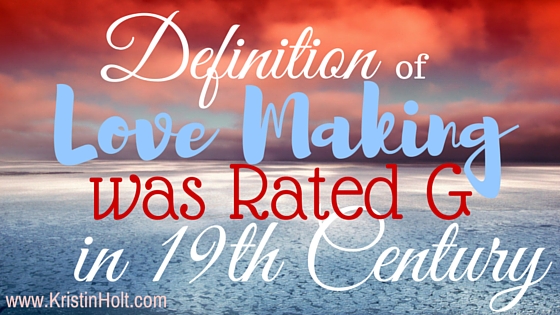
by Kristin Holt | Apr 15, 2016 | Articles
In my recent post about The Proper (and safe) Way to Terminate a Victorian American Courtship because we all know the threat of a suit of Breach of Promise was too great, a quote by the Reverend George W. Hudson in his 1883 book sounded rather scandalous. The good reverend actually said “making love”–and he didn’t mean in a sexual way. It’s essential to note that the term had a very different meaning in the 19th Century and early 20th Century than it does now.
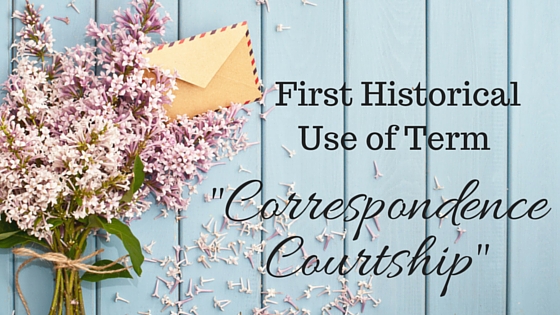
by Kristin Holt | Apr 3, 2016 | Articles
Whether referred to as “Correspondence Courtship” or “Epistolary Courtship”, part of the natural course of 19th century courting included letter-writing. Victorian-era couples could express tender sentiments in letters more easily (often) than in person. Many couples didn’t have the opportunity to spend time together, face-to-face, for too many miles separated them. Coming to know one another, and fall in love, through letter-writing was a standard practice. Results varied from blissful conjugal felicity (a frequently used term of the American Victorian era) to sensational disasters.
Interestingly enough, the term “Correspondence Courtship” (or very similar phrasing) appeared much more frequently and earlier than did the phrase “Mail-Order Bride”.













